Top Defense & Aerospace Hiring Trends for 2025 – An In‑Depth Guide for Employers
Updated June 2025 • Reading time ≈ 10–12 minutes
Introduction
As the defense and aerospace landscape evolves, so do hiring demands. In 2025, recruiting cleared professionals, engineering talent, and proposal support specialists requires new strategies. Below, we outline eight trends every federal contractor, integrator, and supplier should understand to compete effectively in this fast-changing hiring market.
Rapid digital transformation, national security priorities, and increased government spending are fueling workforce changes across the Department of Defense and its contractors. These shifts are not minor—they’re foundational. From the tools used to find talent to the expectations candidates bring to the table, organizations that adapt now will gain the upper hand in workforce planning and program delivery.
Trend 1 – AI‑Driven Candidate Sourcing
Recruiters now rely on machine learning tools that scan databases, clearance eligibility, and public research records. AI shortens sourcing time and identifies passive candidates with relevant DoD experience. It also unlocks hidden pipelines by analyzing conference presentations, technical publications, and public sector innovation awards.
- Example: LLMs reviewing cleared conference speakers’ papers to surface leads.
- Pro Tip: Monitor for bias. Use structured audits to evaluate sourcing prompts quarterly.
- Real-world result: Agencies using AI-driven platforms report up to 50% faster time-to-fill for Top Secret roles.
Trend 2 – Competition for Cleared Talent
In-demand roles include cyber operators, RF engineers, proposal writers, and logistics planners with clearance. The average TS/SCI candidate is approached by at least two recruiters per month. With candidate supply shrinking, competition is intensifying in every defense talent corridor from D.C. to Colorado Springs.
- Signing bonuses and relocation packages are now expected for high-demand roles.
- Retention planning starts at the offer stage—not after onboarding.
- Organizations that conduct quarterly cleared market analysis gain stronger visibility into trends and turnover risk.
Trend 3 – Hybrid RPO & Surge Hiring
Companies are blending in-house recruiters with outsourced surge hiring teams to rapidly scale for proposals and contract awards. This model supports agility and cost-efficiency. Surge hiring ensures readiness during recompetes and peak contract periods, while RPO helps reduce fixed staffing costs long term.
- Benefit: 48–72 hour candidate pipelines without bloated headcount.
- Tip: Verify your RPO partner has cleared surge recruiters ready to deploy.
- Bonus: Proposal teams supported by integrated surge hiring are 42% more likely to meet initial staffing deadlines.
Trend 4 – Continuous Vetting
Under Trusted Workforce 2.0, clearance holders are monitored year-round. Financial or criminal alerts can impact eligibility faster than ever. Employers must adjust their risk models and onboarding processes accordingly. Continuous vetting provides earlier visibility into potential issues but also requires tighter coordination with HR, legal, and security teams.
Organizations should ensure their HRIS systems and staffing vendors are aligned with continuous vetting updates—especially for long-duration programs and proposal-based roles.
Trend 5 – Skills Over Degrees
DoD contractors are rethinking degree requirements and embracing technical assessments. Cyber apprenticeships, project portfolios, and security certs (like CompTIA, CISSP) are taking center stage. As mission needs evolve faster than academic programs, employers must look at what a candidate can do—not just their credentials.
- Consider candidates with deep tool-specific experience even if they lack traditional academic backgrounds.
- Use take-home tasks or lab simulations to replace blanket degree filters.
- Trend to watch: More roles include “equivalent military experience” language in place of four-year degrees.
Trend 6 – Candidate Experience
Friction in the hiring process—especially for cleared candidates—leads to lost opportunities. Long application forms and slow response times cause high drop-off rates. A transparent, respectful candidate journey gives contractors a major edge.
- Offer timelines should be clear upfront (e.g., “Final decision within 7 days”).
- Regular updates matter—especially for sensitive roles requiring months of clearance processing.
- Use recruiter scorecards and Net Promoter Scores (NPS) to track and improve candidate experience.
Trend 7 – DEI in Classified Hiring
Inclusion remains a priority—even in highly regulated spaces. While the clearance process itself is neutral, outreach and hiring pipelines should be deliberately inclusive. Recruiters should avoid networks that unintentionally exclude underrepresented candidates.
Examples include hosting resume workshops at HBCUs and expanding sourcing partnerships beyond traditional defense networks. Measuring pipeline diversity—not just post-hire stats—helps create lasting change.
Trend 8 – Compensation Forecast
Wages in the cleared space continue to rise. According to ClearanceJobs’ 2025 report, average cleared salaries rose 6.4% year-over-year. Employers must budget for aggressive competition across cyber, proposal support, and engineering. Compensation packages are also being redesigned to emphasize remote flexibility, training stipends, and mental health benefits.
- Mid-level cyber roles now commonly command $140K–$170K base, plus bonuses.
- Proposal and pricing experts with active clearances can command up to $200K.
- Trend: 401(k) match and student loan repayment programs are now used as negotiation sweeteners.
Final Thoughts
The hiring environment for defense and aerospace contractors in 2025 is both challenging and full of opportunity. AI tools, flexible hiring models, candidate experience improvements, and thoughtful DEI strategies will set leading firms apart. Whether you’re scaling fast for a recompete or preparing a proposal with contingent talent, knowing—and acting on—these trends gives your team the advantage.
Looking to align your hiring strategy with these insights? Contact the experts at Three Cords Talent to explore custom RPO, proposal staffing, or executive search support.
Categories
- Career Advice (1)
- Defense Hiring Strategy (1)
- Industry Insights (1)
